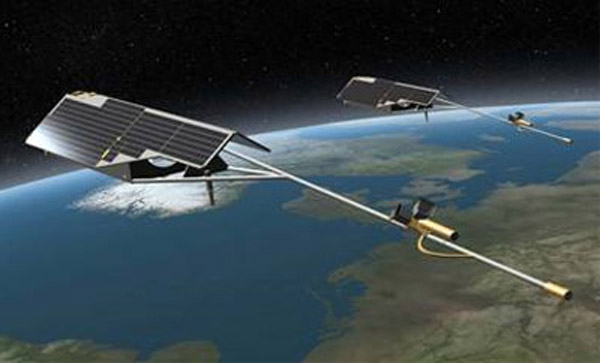Swarm (spacecraft)

Artist's impression of the Swarm A and B.
Swarm is a European Space Agency mission, launched in 2013, which consists
of three identical satellites designed to study Earth's magnetic field
in greater detail than ever before. Swarm builds on the observations made
by the earlier Oersted and CHAMP missions.
Two of the Swarm satellites fly side by side in a polar orbit with an altitude
of 450 km (280 mi); the third moves in a different polar orbit with an altitude
of 530 km (330 mi).
The high-precision, high-resolution measurements of the strength, direction, and variations of Earth's magnetic field made by the satellites will be used, among other things, to shed light on the dynamics of Earth's core, interactions between the core and the mantle, magnetization of the lithosphere, currents flowing in the magnetosphere and ionosphere, and ocean circulation (using its magnetic signature).
Instrument payload
Each spacecraft carries the following instruments:
| launch date | Nov 22, 2013 |
| Launch vehicle | Rokot/Briz-KM |
| Launch site | Pletesk |
| orbits | Swarm A, B: polar, 460 km (apogee) × 87.4° Swarm C: polar, 530 km (apogee) × 88° |
| dimensions | 9.1 m × 1.5 m × 0.85 m |
| mass | 468 kg (launch); 369 kg (dry) |


